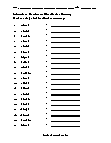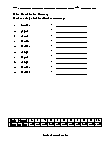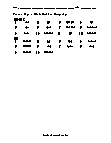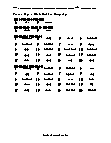Rewrite Using the Distributive Property Worksheets
How to Rewrite a Value Using the Distributive Property - The distributive property allows us to multiply the number by each addend of the sum. It lets us solve the expression often written in the form of a(b + c). The property is also known as the distributive law of multiplication and division. The property states that the product of the difference or the sum is equal to the difference or sum of the products. For example, 4(3-2) = 4(3) – 4(2). The distributive property of multiplication over addition is used when we multiply a number by sum. Suppose, we want to multiply the 4 by 3+2 Following the rule of this property, we will first add the numbers and then multiply by 4 4(3+2) = 4(5) = 20. Or you can also multiply 4 by each addend of the sum and then add the products. This will be known as distributing the 4 4(3 + 2) = 4(3) + 4(2) = 12 + 8 = 20. Note that the answer is the same as before The distributive property of multiplication over subtraction is similar to the distributive property of multiplication over addition. However, in this case, you have to subtract the numbers and then multiply with the difference. For example 5(4-2) = 5(2) = 10. Or you can multiply 5 with each number and then subtract. 5(4-2) = 5(4) - 5(2) = 20 - 10 = 10.
-
Basic Lesson
Demonstrates the nature of the distributive property. Practice problems are provided. Rewrite using the distributive property. g (t+9) According to the distributive property a (b+c) = ab + bc Therefore, g (t+9) = gt + 9g.
View worksheet -
Intermediate Lesson
Explains the applications of the distributive property. Practice problems are provided.
View worksheet -
Independent Practice 1
Contains 20 rewrite Using the Distributive Property problems. The answers can be found below.
View worksheet -
Independent Practice 2
Features another 20 Rewrite Using the Distributive Property problems.
View worksheet -
Homework Worksheet
12 Rewrite Using the Distributive Property problems for students to work on at home. Example problems are provided and explained.
View worksheet -
Topic Quiz
10 Rewrite Using the Distributive Property problems. A math scoring matrix is included.
View worksheet
Tricky
What's the largest number you can write in three digits?
And, no, it is not 999
Answer: 999 (9 to the 9th power of 9).







